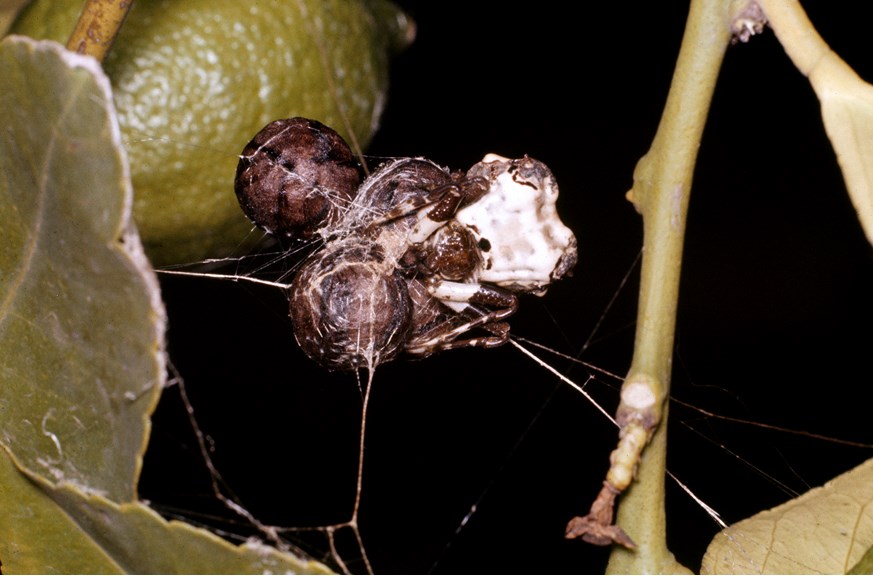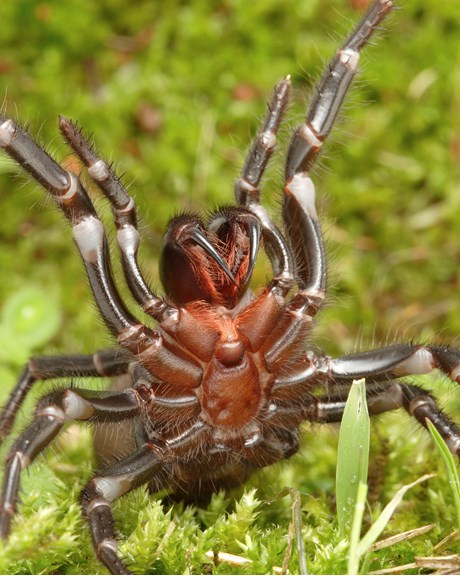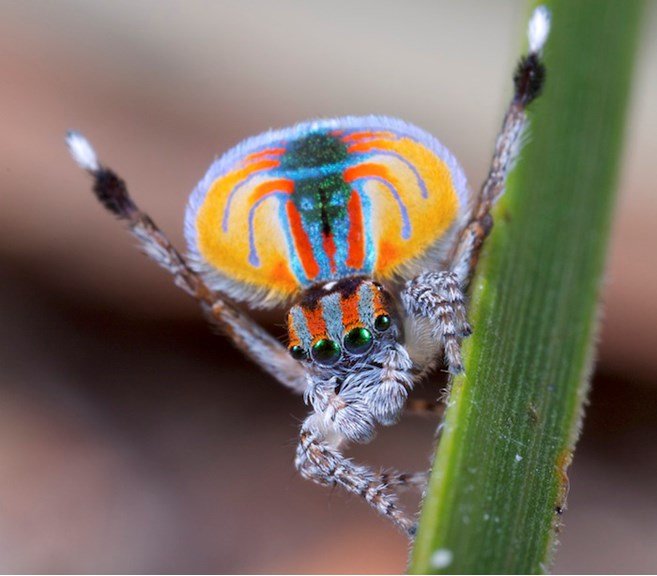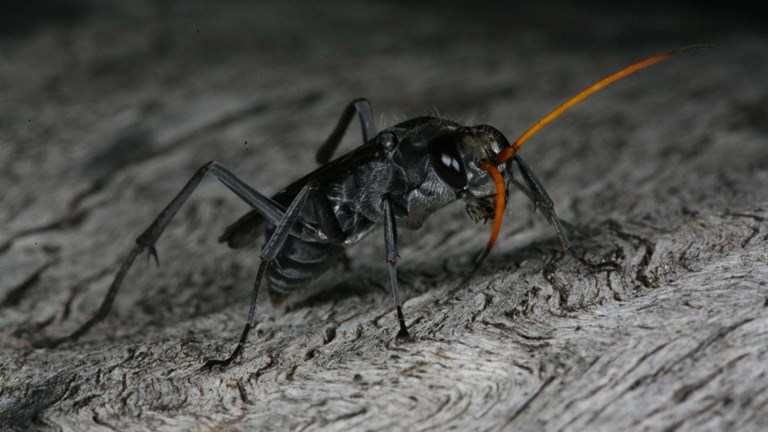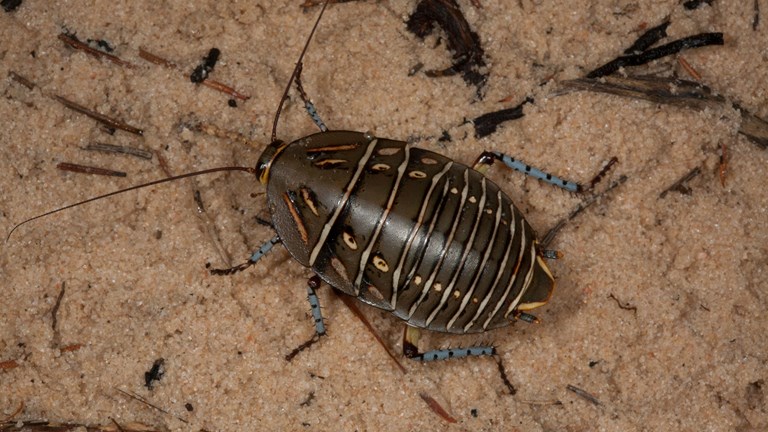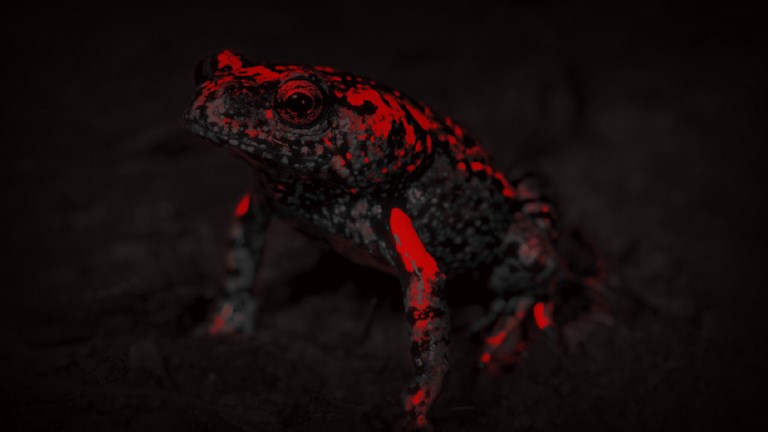What good are spiders?
At Melbourne Museum we are regularly asked the question 'What good are spiders?' Which usually translates as 'What good are spiders to us?'
Apart from their intrinsic right to be here, spiders do humans a power of good as well—both directly and indirectly.
Spider silk has been traditionally used in constructing nets, clothing and even the reticle (crosshairs) in telescopic sights.
Spiders are an important source of food in many human cultures, and are seen as good luck charms or totems in others; the creatures that spin life and all creation into being.
Most importantly, spiders play a fundamental role in natural ecosystems – the enormous bulk of spiders support a large proportion of 'insectivorous' animals, and quite a few vertebrate species feed almost exclusively on spiders alone. Birds not only eat spiders but many use spider silk to bind their nests.
Here’s some Australian spiders we think deserve some appreciation.
1. The Bird-dropping Spider (Celaenia excavata)
This humble little spider is a marvel of camouflage and targeted pest control. Looking remarkably like a piece of bird poo, the female doesn’t build a web but instead lures its moth prey by mimicking the pheromone (sex scent) of a particular group of moths (Owlet Moths, Family Noctuidae).
These are the same moths whose caterpillars destroy your vegetable patch and vast tracks of agricultural crops in Australia.
The Bird-dropping Spider represents perhaps the greatest service that spiders offer to humans—removing literally billions of pest insects before they get a chance to cause havoc with our food crops.
2. The Sydney Funnel-web Spider (Atrax robustus)
Although responsible for 13 deaths in Australia, and classified as the deadliest spider in the world, the Sydney Funnel-web Spider may yet save human lives.
The toxins in spider venom often target the same compounds that, when better controlled, prevent disease. And they have the advantage of being fast-acting and targetable.
Venoms with the potential to treat muscular dystrophy, chronic pain, Alzheimer’s and even cancer are currently being researched, the latter involving venom from the Sydney Funnel-web Spider.
3. The Garden Orbweaver (Eriophora biapicata)
Beyond just their direct benefits, spiders also inspire us to push the limits of innovation.
The Garden Orbweaver can be found in most Melbourne backyards, but its work usually goes unappreciated. Yet the orb web is one of the most amazing feats of architecture in the animal kingdom.
Spider silk is the strongest known natural fibre, stronger than steel and able to stretch up to 50% its own length. No artificial material comes close to matching this, and if humans could artificially replicate spider silk it would revolutionise material science – everything from civil engineering to clothing to medicine.
4. The Social Huntsman (Delena cancerides)
Studying spiders can re-invent our understanding of the invertebrate world.
While we may be accustomed to seeing spiders going solo, Social Huntsmans have made scientists rethink which animals can be social, and even what sociality means. That’s right—these spiders have friends.
Up to 300 Social Huntsmans can be found living together under a single piece of bark. They even hunt and feed together, and are aggressive towards other colonies.
Sociality in this species probably evolved when Australia dried out in the distance past, rendering hiding places under bark very scarce.
Rather than leaving the original nest at an early age and being unable to compete for limited housing, the spiders evolved to leave home fully grown, big and strong enough to take over and defend new nesting sites.
5. All the colourful spiders!
Spiders can help our gardens, our medicines, and inspire and teach us. They can also entertain us.
Peacock spiders (Maratus species) have risen to prominence on the internet in recent years due to their dazzlingly iridescent colours.
Peacock spiders are not the only jewels of the arachnid world. Spiders are generally perceived as drab brown or black, but they can be more colourful than the most exquisite flower, butterfly or bird of paradise.
Jumping spiders, some of the most colourful on earth, possess filters over their eyes to see more colours than humans can, including into the ultraviolet.
Some crab spiders can slowly change colour to match their backgrounds, particularly when hunting on flower heads.
Even the Orbweaver group, not normally known for their brilliant colours, can produce jewels like the Spiny Spider.
Spiders are vital members of the world’s ecosystems—including the ecosystems in our own homes. You can find out more about your own eight-legged housemates here, or discover some common spider myths.
A great range Victorian, Australian and exotic spiders are on display every day in the Bugs Alive! exhibition at Melbourne Museum.
